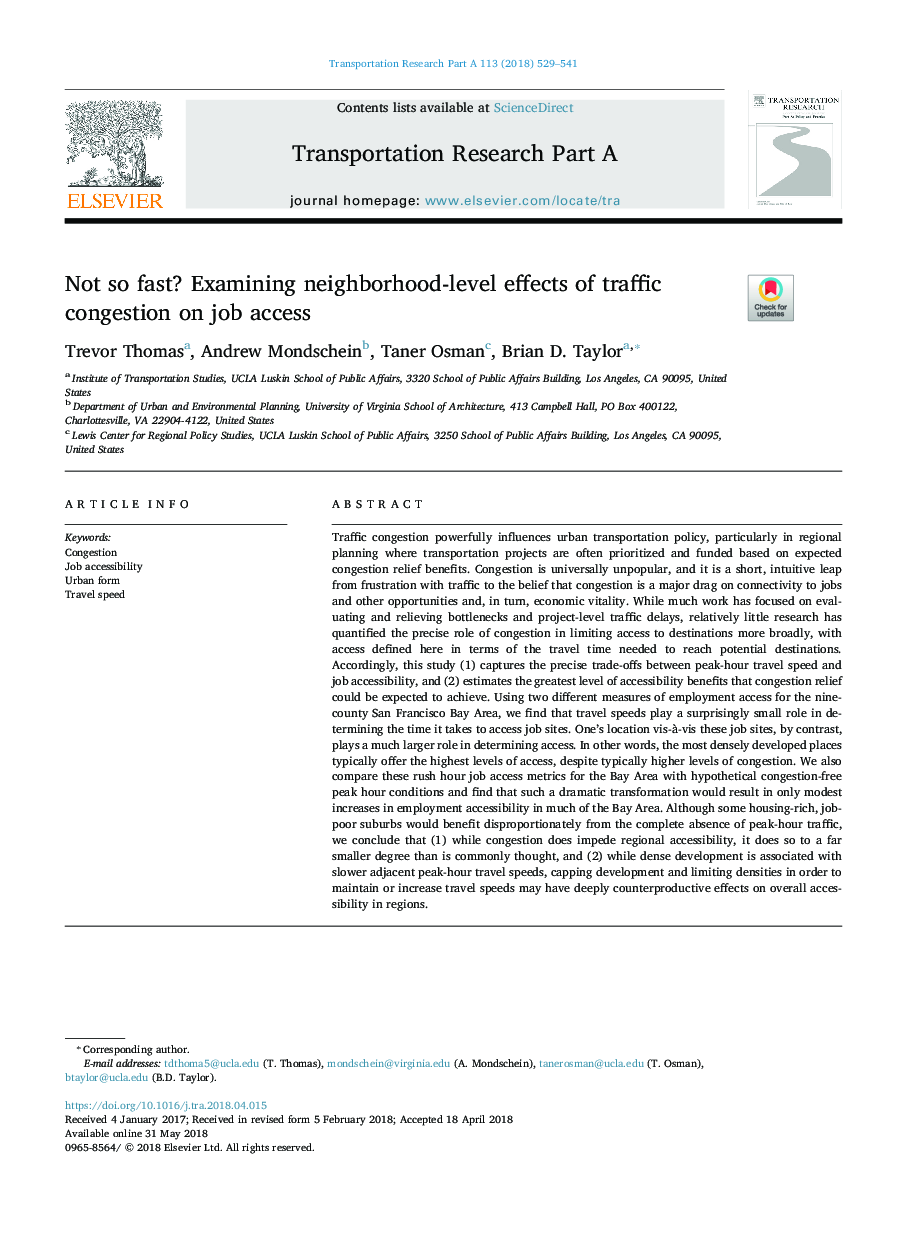| کد مقاله | کد نشریه | سال انتشار | مقاله انگلیسی | نسخه تمام متن |
|---|---|---|---|---|
| 6780208 | 1432187 | 2018 | 13 صفحه PDF | دانلود رایگان |
عنوان انگلیسی مقاله ISI
Not so fast? Examining neighborhood-level effects of traffic congestion on job access
ترجمه فارسی عنوان
نه خیلی سریع؟ بررسی اثرات محدوده ترافیک در دسترسی به شغل در سطح محله
دانلود مقاله + سفارش ترجمه
دانلود مقاله ISI انگلیسی
رایگان برای ایرانیان
کلمات کلیدی
جابجایی، دسترسی به شغل، فرم شهری، سرعت سفر
موضوعات مرتبط
مهندسی و علوم پایه
سایر رشته های مهندسی
مهندسی عمران و سازه
چکیده انگلیسی
Traffic congestion powerfully influences urban transportation policy, particularly in regional planning where transportation projects are often prioritized and funded based on expected congestion relief benefits. Congestion is universally unpopular, and it is a short, intuitive leap from frustration with traffic to the belief that congestion is a major drag on connectivity to jobs and other opportunities and, in turn, economic vitality. While much work has focused on evaluating and relieving bottlenecks and project-level traffic delays, relatively little research has quantified the precise role of congestion in limiting access to destinations more broadly, with access defined here in terms of the travel time needed to reach potential destinations. Accordingly, this study (1) captures the precise trade-offs between peak-hour travel speed and job accessibility, and (2) estimates the greatest level of accessibility benefits that congestion relief could be expected to achieve. Using two different measures of employment access for the nine-county San Francisco Bay Area, we find that travel speeds play a surprisingly small role in determining the time it takes to access job sites. One's location vis-Ã -vis these job sites, by contrast, plays a much larger role in determining access. In other words, the most densely developed places typically offer the highest levels of access, despite typically higher levels of congestion. We also compare these rush hour job access metrics for the Bay Area with hypothetical congestion-free peak hour conditions and find that such a dramatic transformation would result in only modest increases in employment accessibility in much of the Bay Area. Although some housing-rich, job-poor suburbs would benefit disproportionately from the complete absence of peak-hour traffic, we conclude that (1) while congestion does impede regional accessibility, it does so to a far smaller degree than is commonly thought, and (2) while dense development is associated with slower adjacent peak-hour travel speeds, capping development and limiting densities in order to maintain or increase travel speeds may have deeply counterproductive effects on overall accessibility in regions.
ناشر
Database: Elsevier - ScienceDirect (ساینس دایرکت)
Journal: Transportation Research Part A: Policy and Practice - Volume 113, July 2018, Pages 529-541
Journal: Transportation Research Part A: Policy and Practice - Volume 113, July 2018, Pages 529-541
نویسندگان
Trevor Thomas, Andrew Mondschein, Taner Osman, Brian D. Taylor,
